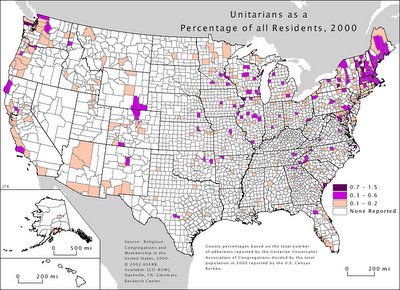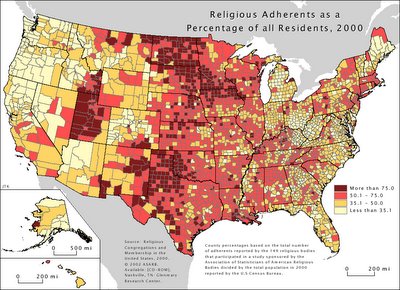Where the Unitarians Are
Recently I ran across a Map Gallery of Religion in the United States - that is, the distribution of people belonging to different faith groups by county throughout the country. Here's the map for UUs.

It's no surprise that the highest concentration is in the northeast, with pockets along the west coast. I was interested to see the little enclave in northern Colorado and Wyoming. Of course the highest concentration of UUs by county is only 1.5 percent of the population, compared to 10 - 50+ percent for Catholics and Baptists.
Another interesting map is this one showing percent of religious adherents, ranging from the Bible belt (which seems to stretch through the middle of the country from Canada to Mexico and the Gulf) to the godless northwest.
Something is missing, however. There are maps for Judaism and Islam, but that's it for non-Christian (except UU, of course). So what about the Buddhists and Hindus? According to estimates based on polls conducted by the City University of New York in 1990 and 2001, there are around a million Hindus and 1.5 million Buddhists in the U.S. today, compared to about 890,000 UUs (and I don't know where they got this figure - the official UUA count is about 159,000).
I think it would be more accurate to call this project a "Map Gallery of [Abrahamic] Religion in the United States."